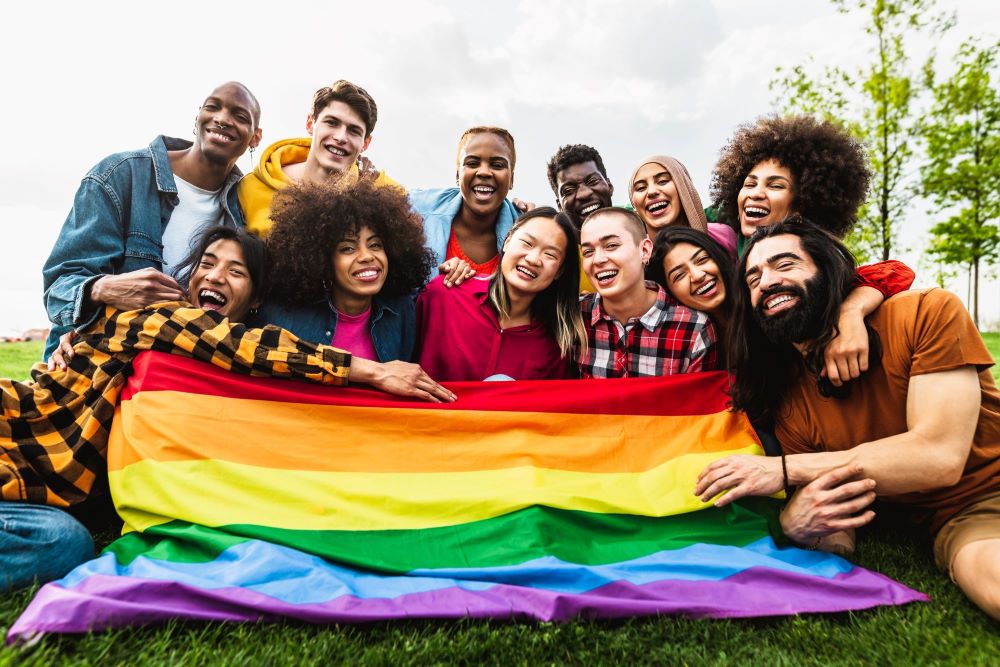GLAAD Survey: New Insights on LGBTQ+ Representation in Gaming
The GLAAD inaugural industry survey reveals a stark disparity: despite 17% of gamers identifying as queer, less than 2% of console video games incorporate LGBTQ+ characters or narratives.
The survey, released Tuesday, February 13, found that a significant majority of respondents experienced harassment while gaming online. However, it also revealed that many queer gamers see virtual worlds as a refuge, especially in states with anti-LGBTQ+ legislation. In these areas, 75% of Queer respondents feel free to express themselves in games, unlike in real life.
“That is a statistic that should pull on everyone’s heartstrings,” stated Blair Durkee, who led the advocacy group survey alongside partners from Nielsen, the data and marketing firm. “The statistic is driven largely by young gamers. Gaming is a lifeline for them.”
GLAAD, known as the Gay & Lesbian Alliance Against Defamation, has been analyzing queer representation in television since 1996. Their latest report displayed 10.6% of series regulars in prime-time scripted TV identified as LGBTQ+, providing context for their gaming study.
Less Than 2% of Console Video Games Have LGBTQ Representation Despite 17% of Gamers Being Queer, GLAAD Report Says https://t.co/txihsEhBnV
— Variety (@Variety) February 13, 2024
Tristan Marra, GLAAD’s head of research and reports, disclosed that the video game survey garnered nearly 1,500 participants. Researchers meticulously combed through public information to identify inclusive content in games accessible via the PlayStation, Xbox, and Switch digital libraries.
GLAAD noted that it reached out to major companies, such as Sony and Nintendo, for its survey but did not receive a response.
Tristan Marra commented, “It helped validate what we know about the critically important role that gaming plays. We wanted to talk about the moral case and the business case.” The report highlights data showing that global gaming revenue exceeds that of film and music combined, with younger generations dedicating almost as much time to gaming as watching television. Additionally, it indicates a desire among many queer players to see themselves represented in games.
unironically borderlands 2 was my first time seeing openly queer people in a video game. two player characters are canonically queer and four major npcs are canonically queer (two of them are married!). also, zer0 is there. https://t.co/RThQ51xVTg
— eeb strike feb 18th – 25th (@parasiteib) February 9, 2024
“The findings of this report send a powerful message to the industry: It is time to move beyond the notion that LGBTQ+ inclusive games are a separate, niche category,” Durkee emphasized. “All games should aim to reflect the diversity of the people who enjoy them.”
In recent years, GLAAD has worked with efforts to enhance queer representation in games like The Sims 4 and Tell Me Why, which the organization noted included the first playable transgender character in a big studio game.
Notable recent examples of LGBTQ+ characters in video games include Ellie from The Last of Us and Venture from Overwatch 2.
Some players have noticed gradual improvements in the diversity of the gaming industry, although they feel progress happens slowly. “I would like to see the gaming industry hire more gay people and give them the tools in order to better reflect our lived experiences,” Regulus stated.
yeah i'm definitely thinking the problem is less there's no queer writing on video games and more that it's so scattered across the internet
— DΔΠTE (@steelydante) February 5, 2024
Now that the GLAAD statistics are public, it is only a matter of time before the gaming industry takes action. LGBTQ+ inclusion is necessary considering their present queer audiences. Hopefully, this report will insist on implementing more representation.






